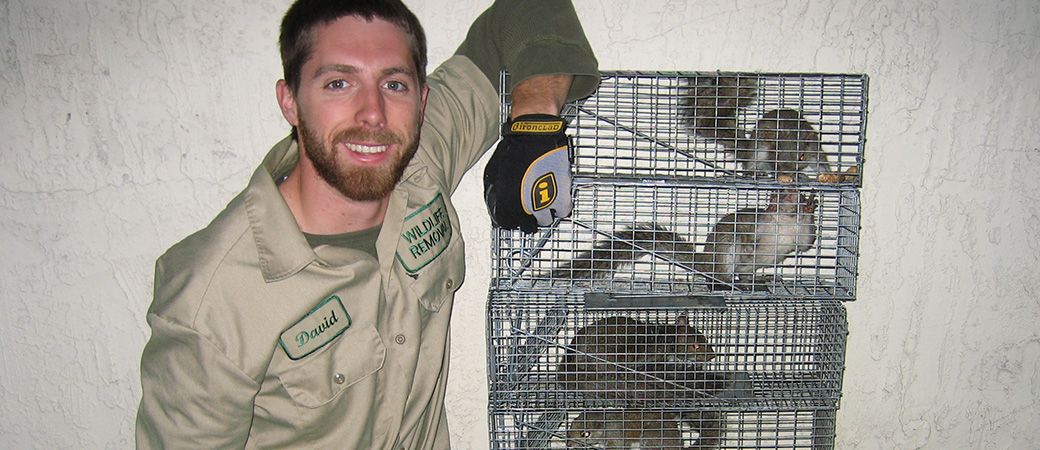Wildlife Trapping with Live Cage Traps
Trapping with live cage traps is a humane and efficient way of dealing with nuisance wildlife, but different animals will require different removal techniques to be employed, and live cage trapping won’t be a solution for any and all invasive critters. Live cage traps will be used especially when dealing with raccoons, groundhogs, skunks, and armadillos. And since the raccoon is the most common animal to invade our homes, I will use this animal as an example for wildlife trapping with live cage traps.

In order to establish a storyline, let’s say that you have a mother raccoon raising a litter in the attic, as this is one of the most frequently encountered situations by wildlife removers. Locating the litter of baby raccoons should be your first step. Be careful while walking in the attic, and don’t step directly on insulation, as this can be dangerous and you could fall through, especially if a raccoon is nesting in the attic (they damage and weaken insulation). For the sake of accuracy, I have to say that the raccoon is very protective of its young, and will hide the litter well enough, but let’s just assume you’re lucky and able to find the nest easily. Once the litter is located, with the use of protective gloves and a pillowcase, pick up the cubs one by one and gently put them together in the pillowcase. This should be your first step simply because baby raccoons are the best bait for trapping mother raccoons, usually getting the job done in less than an hour. Once you have the cubs, you can put them as bait in the back compartment of a cage trap that has a trap divider. In this situation, the cage can be placed on the ground, but make sure it’s somewhere in the shade. When using a live cage trap like this, it is very important that you install barriers on both sides of the trap. Now it’s time to keep your distance and wait for the mother raccoon to come rescue her young. Once the big female is trapped in the cage, lift the divider and let the family reunite.
The “live bait” method is only one of the tactics used to trap raccoons in live cage traps, and while it is true that it’s the most efficient one, sometimes circumstances simply don’t allow for this method to be put in place. If baiting the raccoon with its litter is not an option, the cage should not be placed on the ground, as it is very unlikely that this will help with trapping the raccoon, and other animals could easily get trapped in there. The trap should never be set in the attic, as this won’t work either. You’re left with two options here: attaching the cage with bolts near the animal’s point of entry, or installing the cage directly on the point of entry. Bait is kind of irrelevant when talking about raccoons, but you can never go wrong with peanut butter. If you have to install the cage on the roof, be sure to also place a steel screen below the cage so that the raccoon can’t cause damage to the shingles in its desperate attempts at escaping. Be sure to check the trap frequently and proceed to relocating the animal as soon as possible after capturing it, as the raccoon may end up hurting itself in the cage while trying to escape, or even end up dying from exhaustion or dehydration. Relocation can be another very big problem for various reasons, but I won’t get into it here. I will just remind you to make sure there’s nothing around the cage during transportation that the animal can grab, because raccoons will try and grab anything in an effort to escape. The animal should be relocated at least ten miles away from your home so that it can’t find its way back. And don’t forget, with wildlife trapping, it’s ultimately all about using the correct type of cage in the correct way.
Wildlife trapping with live cage traps is no challenge for professional wildlife removers, but it can definitely be a major headache for the unexperienced homeowner. And even if the animal is successfully trapped, remember that this is only one point you need to check when talking about effective and permanent wildlife removal. Safely relocating the animal, performing the necessary home repairs, and decontaminated the area are key measures in both preventing the animal from returning or deterring other wildlife, and eliminating the risk of disease. For a job well done, always contact a professional who will have the necessary equipment and knowledge to solve the problem humanely and efficiently, and who will also know who to deal with the aftermath, from relocation to further prevention measures.

